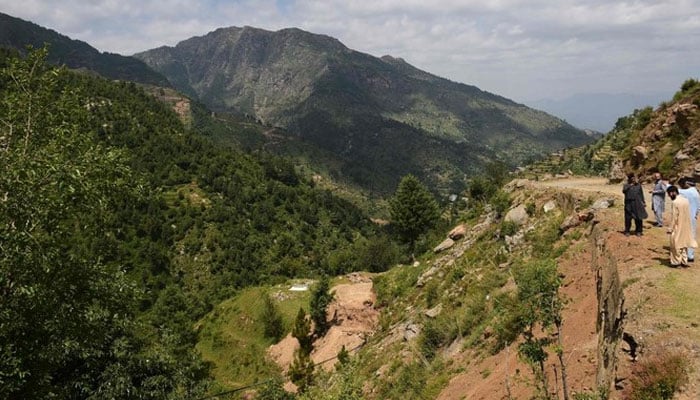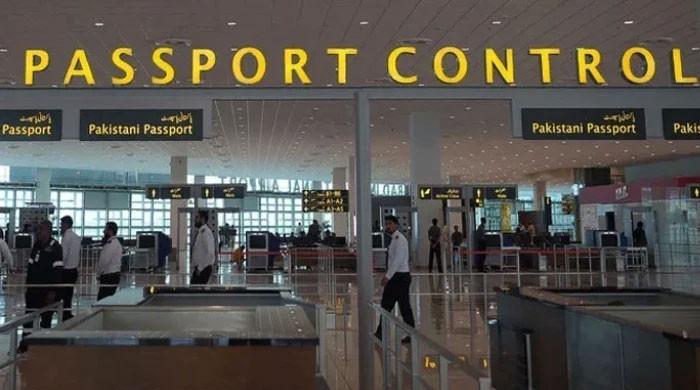20% forest area lost to urbanisation in Pakistan
Highest forest area in Pakistan is in KP, followed by Sindh, Punjab, Balochistan, AJK and GB
February 06, 2024

- Pakistan has 1,131 trees per sq km only higher than Afghanistan.
- South Asia has 11 million hectares of privately owned forests.
- Indigenous people own least number of forests among all categories.
ISLAMABAD: Pakistan has lost almost 20% of its forest area in the past 24 years following the rise of urbanisation and dearth of energy, The News reported citing research by the Pakistan Institute of Development Economics (PIDE).
In its latest research titled 'Challenges and Opportunities of The Billion Tree Tsunami Project (TBTTP), PIDE stated that Pakistan has the lowest rate of forestation in the world with almost 27,000 hectares of forest clearance annually. The percentage of private ownership of forest land in South Asia is highest in Pakistan and Bangladesh, 36% and 34%, respectively, as per the research.
The highest forest area in Pakistan is in Khyber Pakhtunkhwa province followed by Sindh, Punjab, ex-Fata, Balochistan, Azad Jammu and Kashmir and Gilgit Baltistan (GB), respectively. Rapid population growth, rising urbanisation, high poverty and shortage of energy such as gas are the main factors of deforestation in Pakistan, according to the research.
Further, in cities like Lahore and Islamabad, infrastructure development and construction of large road structures for individual mobility has taken a toll on forestation, reveals the study. Pakistan is among the countries with the lowest number of trees in the world with less than one billion trees.
Pakistan has 1,131 trees per sq km (only higher than Afghanistan in South Asia) and only five trees per person whereas a desirable tree level for sustainable development requires 900 trees per person, states the research.
Countries with the highest landmass have the highest totals. Russia (642 billion) has the highest number of trees in the world followed by Canada (318 billion), Brazil (302 billion) and the US (228 billion). Pakistan is among the countries with the lowest number of trees in the world with less than one billion trees.
Since 2000, the total forest area of Pakistan has decreased by 20%. In 2021 just 4.8% (36.9sq km out of total land area of 770.8sq km) of Pakistan’s land area had forest cover compared to 5.9% (45.1sq km) in 2000. About 27,000 hectares of forests are cleared every year in Pakistan (out of which 50% is used for cooking and heating in households that lack access to gas).
The forest cover in Pakistan is significantly lower than the average value of 31.2% forest cover across the world, 18.9% in South Asia, 24.4% in India and 14.5% in Bangladesh. “Ideally, a country should have 25% forest cover for a healthy environment”, states PIDE research.
Further it notes, “Distribution of the country’s total forest area varies; it is the highest in Khyber Pakhtunkhwa (32.7% of total forest area of Pakistan), followed by Sindh (14.8%), Punjab (12.4%), Ex-Fata (11.9%), Balochistan (11.1%), Azad Jammu and Kashmir (9.6%), and Gilgit-Baltistan (7%)”.
“Within the forest cover area of the country, dry temperate forests account for the largest share of 36%, followed by sub-tropical broadleaved shrub (19%), moist temperate (15%), Chir Pine (13%), Riverine (4%), irrigated plantation (4%), thorn (3%), mangrove (3%) and subalpine forests (2%)”, said research.
In addition, according to PIDE’s research, owing to rapid population growth, rising urbanisation, high poverty and shortage of energy, the forestation rate has declined in the country over time. Timber mafias and locals have chopped down immense swathes of forests. People, who do not have electricity or do not get it regularly, use wood fires for lighting, cooking and warmth.
It further notes that South Asia has 11 million hectares of privately owned forests and their area is increasing, with Pakistan and Bangladesh having the highest proportion of privately owned forests (36% and 34% respectively in 2010). An increase in the share of private ownership of forests could have serious implications for sustainable forest management in the future.
Indigenous people own the least among all categories of forest ownership, and the ratio is on the decline. This may have serious implications not only for forest conservation but also for the empowerment of indigenous people, who are already among the most deprived.











